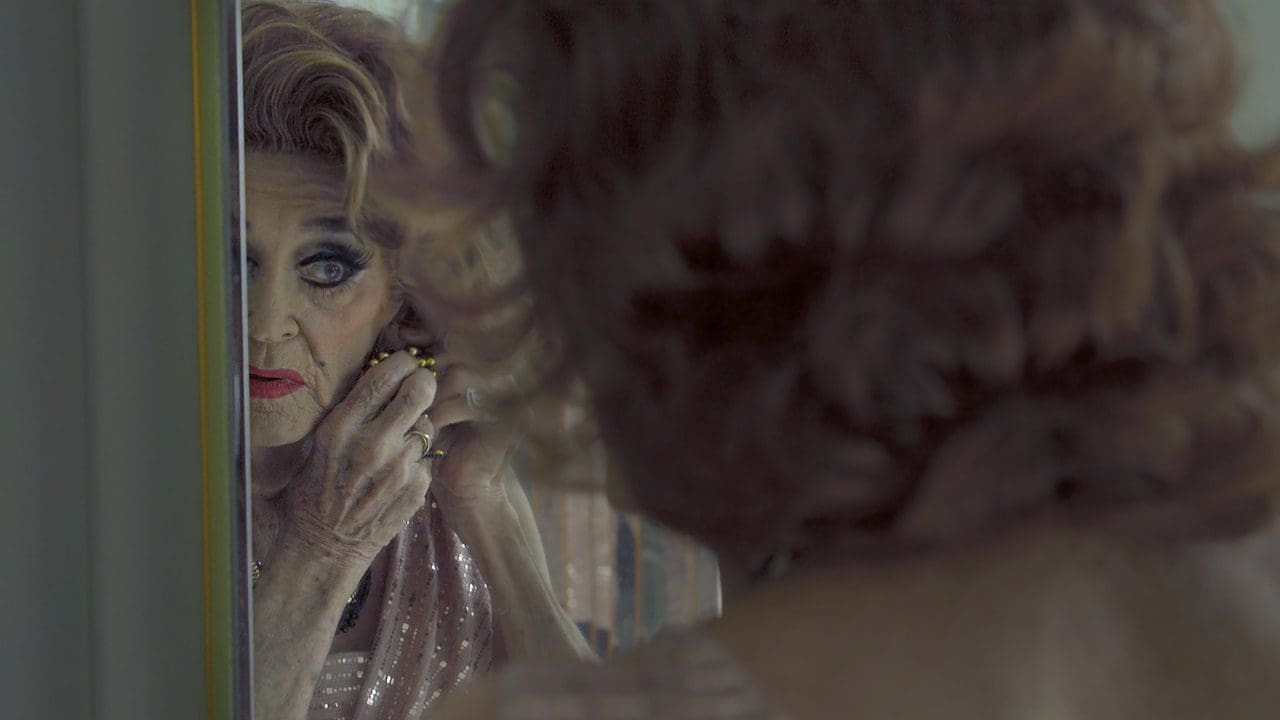
America’s queer history is not as complete as it should be. In large part, that’s because the AIDS crisis of the ’80s and ’90s took generations of queer people away long before they could tell their stories. However, it’s also because that history was often deliberately destroyed by queer people afraid of discovery or their family members, who destroyed evidence of their queer relatives out of shame. Directors Michael Seligman and Jennifer Tiexiera’s film, P.S. Burn This Letter Please, which screened digitally at this year’s Tribeca Film Festival, attempts to fill in some of that lost history.
The film’s title comes from one of hundreds of letters found in a Los Angeles storage unit in 2010 that were addressed to radio personality, Reno Martin, from his friends in the New York City drag scene of the ’50s. Because the letters are the audience’s entry point into this period and this world, the film’s tone is convivial and conversational, relying heavily on reminiscences by its interviewees to contextualize events referred to in the letters and supplemented by interviews with historians and archival images from the period. As female impersonator Adrian, born Henry Arango and 92 at the time of filming, says of NYC’s fabulous nightlife at the time, “we didn’t have any civil rights, but who needed it?”
It’s a pithy comment, but it’s also important to note that the film doesn’t expand on it because it assumes a base level knowledge of queer history. Viewers unaware of the ways homosexuality was criminalized mid-century or the police raids, violence and jail time queer people endured simply for existing won’t really gain a broader understanding of that history here other than how it personally affected the film’s subjects. Rather, Seligman and Tiexiera focus on making sure the audience understands the drag scene-specific terminology its subjects use—much of which means the same thing today as it did then. Viewers new to drag are meant to gather from context clues that ”paint” means to put on make-up, while “trade” receives a more detailed explanation that delineates how its meaning has evolved slightly.
While these explanations could feel like wasted time for viewers who already know them, Tiexiera and co-editor Alex Bohs keep us interested by ensure the film is visually appealing as well. In one scene, as we hear a letter from a performer named Josephine Baker (named after the other, more famous entertainer of the same name) an animation of a butterfly zipping away accompanies her description of “mopping” four sweaters. As Claude Diaz (stage name Claudia), who was one of the best-known drag artists in the scene at the time explains in the next scene, “mopping” means stealing and follows it up with a story about Josephine taking a 6-foot white ostrich fan from Brooks Costumes, which he jokingly calls the “biggest contributor” to drag in America.

It’s a great story well told, but it’s enhanced by the images of Josephine, similar fans and archival photos paired with it and throughout, P.S. Burn This Letter Please‘s strength lies in allowing its subjects to use their personal experiences to give the audience a deeper understanding of the time. One of the film’s best passages comes when the performers describe the shows they used to put on at Club 82 (or just as often, 82 Club), where the likes of Warren Beatty and Judy Garland would watch them perform. Though moments where George Roth (stage name Rita George) describes how Elle-Funt threw away hundreds of gift sketches sent backstage by Salvador Dalí, it’s the revelation that the mob funded the club that’s most interesting. As the interviewees explain, Anna Genovese–wife of Vito Genovese, head of the New York and New Jersey at the time–ran the club and many of them remember her fondly.
It’s one of those remembrances, in fact, that gives the film one of its most poignant moments. Throughout, Terry, a former female impersonator who eventually made the decision to transition, describes how, when she spoke to Anna about the financial barriers to receiving medical treatment, Genovese not only sent her to her own doctor, but presumably paid for the entire process. It’s a really striking story not only for its power to Terry, but everything it implies about institutional barriers set in front of queer people, Genovese’s quiet acceptance of who Terry was and what it would have meant to make that decision in a time when Terry notes people thought of it as “mutilation.”
Though that story is undeniably one of the film’s heaviest, most of them are much lighter and Diaz delivers some of the film’s frankest and best stories (one involving some wigs from the Metropolitan Opera is particularly sublime). That said, it’s the moments when he acknowledges how much time has passed that are possibly the film’s most moving. In one scene, Diaz goes on at length about how a fellow queen, Daphne, had the best legs he’d ever seen and then describes an outfit she wore to Phil Black’s Ball in Harlem. As Diaz describes how he had to take two blonde wigs and put them together and styled them to go with that costume, someone off camera hands him a picture of Daphne from that very night and Diaz soon dissolves into tears. “I suddenly feel as though somebody had just stabbed me,” he explains, “because I remember that night.” As he struggles to compose himself, he adds, “I have to keep in mind that that’s over…and I’m sorry that it’s over and finished. You have no idea.”
It is inevitable that Seligman and Tiexiera’s story must eventually lead to the AIDS crisis, but it’s surprising that they manage to save it basically until the film ends. As they run through their subjects latter years and reveal the fates of each of the featured letter writers, there are the expected examples of tragic lives ended too soon, but there are also shockingly, beautifully, examples of survival and hope. P.S. Burn This Letter Please is meant to preserve a forgotten history before it disappears with the people who lived it, but its choice to make that history joyful even as it remains brutally true feels as wonderfully brash as the queens and female impersonators who dared to live proudly out in the open in the ‘50s.

